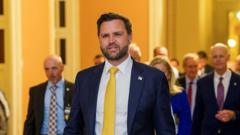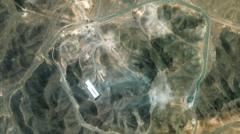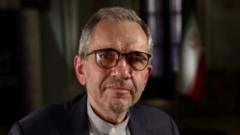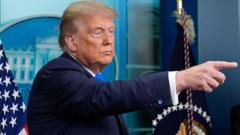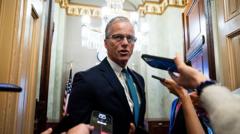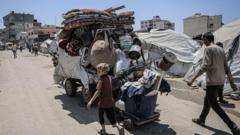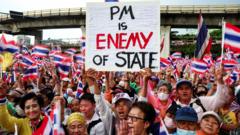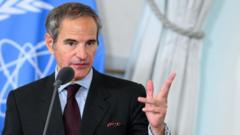As voters navigate a complex political landscape shaped by President Trump's trade policies and rising tensions, key issues like housing affordability and national sovereignty dominate the discourse off the electoral season.
**Canada's Critical Election: A Nation Divided by Leadership Choices**

**Canada's Critical Election: A Nation Divided by Leadership Choices**
In a race influenced by external pressures and internal divisions, Canadians cast ballots today in a pivotal election that shapes the future leadership and economic direction of the country.
Canadians are casting their votes in a high-stakes election today, deciding who will lead the country amidst the backdrop of President Trump's provocative trade actions and economic uncertainty. The Liberal Party, driven by newly appointed leader and Prime Minister Mark Carney, is challenging the once-dominant Conservative Party led by Pierre Poilievre.
Just three months prior, the Conservatives held a substantial lead in polls, but a series of unexpected developments, including Trudeau's resignation and mounting pressure from Trump, have altered the landscape. The Liberal Party's rapid gain in support signals a shift in public sentiment, with many viewing Carney's experience as crucial for navigating the current political crisis.
Alongside the two primary candidates, the electoral playing field also includes the left-wing New Democratic Party, the Green Party, and the Bloc Québécois, each vying for parliamentary representation, although their anticipated influence remains substantially lower.
The election is particularly significant for Quebec, where the Bloc Québécois—previously anticipated to perform strongly—has faltered due to shifting attitudes among constituents regarding sovereignty amidst fears of American encroachment.
For voters like Yannick Maheu and Christine Lussier in Quebec, the choice is complicated: loyalty to traditional parties is being reconsidered as they seek leaders with capabilities to confront issues such as Trump's tariffs that pose real threats to Canadian stability.
Carney's centrist stance offers a counterweight to Poilievre's more direct and aggressive tactics, eliciting mixed reactions from the electorate. While some advocate for deregulation under Poilievre, others view him as too closely aligned to the controversial U.S. president during a fraught time in international relations.
As polling stations close progressively across Canada's six time zones, early indications suggest that the race is more competitive than anticipated. The counting procedures are manual, which may delay results as anxious citizens await clarity on their country's future leadership.
Each party leader has laid out strategies resonant with urgent issues such as housing affordability—an escalating concern as prices reach unprecedented peaks—and the looming threat posed by the U.S. government's policies.
As Canadians process their choices, the result of today's election promises to shape not only their immediate societal architecture but also long-term relationships with international powers and the very fabric of Canadian governance itself.
Just three months prior, the Conservatives held a substantial lead in polls, but a series of unexpected developments, including Trudeau's resignation and mounting pressure from Trump, have altered the landscape. The Liberal Party's rapid gain in support signals a shift in public sentiment, with many viewing Carney's experience as crucial for navigating the current political crisis.
Alongside the two primary candidates, the electoral playing field also includes the left-wing New Democratic Party, the Green Party, and the Bloc Québécois, each vying for parliamentary representation, although their anticipated influence remains substantially lower.
The election is particularly significant for Quebec, where the Bloc Québécois—previously anticipated to perform strongly—has faltered due to shifting attitudes among constituents regarding sovereignty amidst fears of American encroachment.
For voters like Yannick Maheu and Christine Lussier in Quebec, the choice is complicated: loyalty to traditional parties is being reconsidered as they seek leaders with capabilities to confront issues such as Trump's tariffs that pose real threats to Canadian stability.
Carney's centrist stance offers a counterweight to Poilievre's more direct and aggressive tactics, eliciting mixed reactions from the electorate. While some advocate for deregulation under Poilievre, others view him as too closely aligned to the controversial U.S. president during a fraught time in international relations.
As polling stations close progressively across Canada's six time zones, early indications suggest that the race is more competitive than anticipated. The counting procedures are manual, which may delay results as anxious citizens await clarity on their country's future leadership.
Each party leader has laid out strategies resonant with urgent issues such as housing affordability—an escalating concern as prices reach unprecedented peaks—and the looming threat posed by the U.S. government's policies.
As Canadians process their choices, the result of today's election promises to shape not only their immediate societal architecture but also long-term relationships with international powers and the very fabric of Canadian governance itself.






